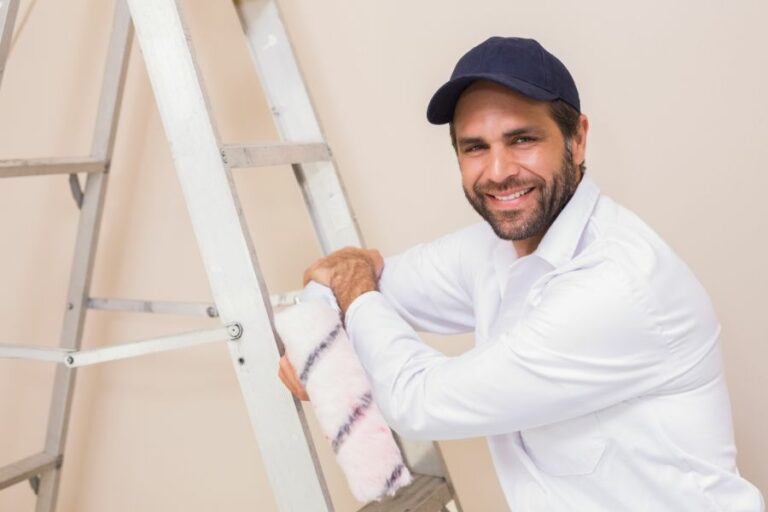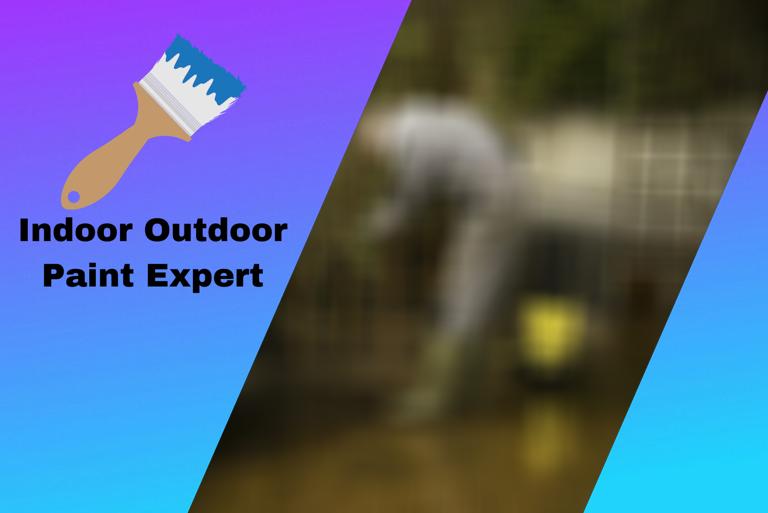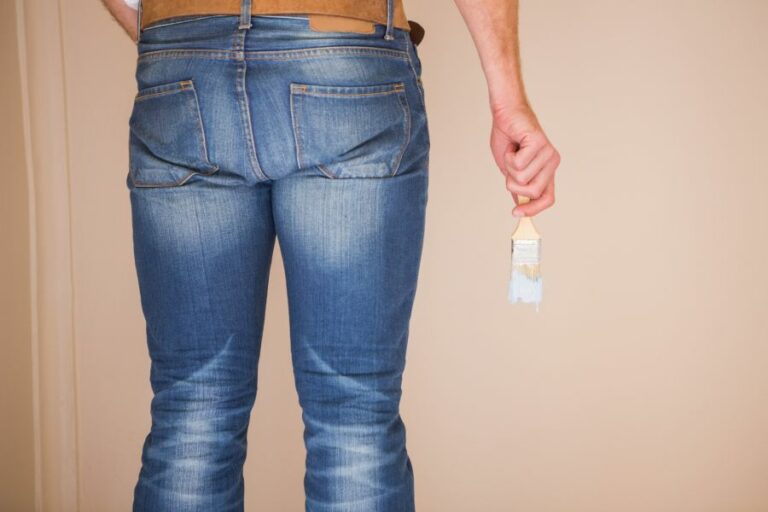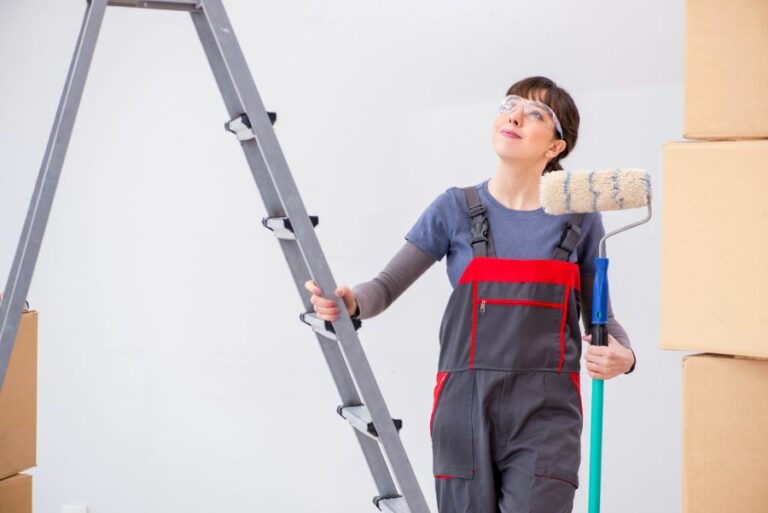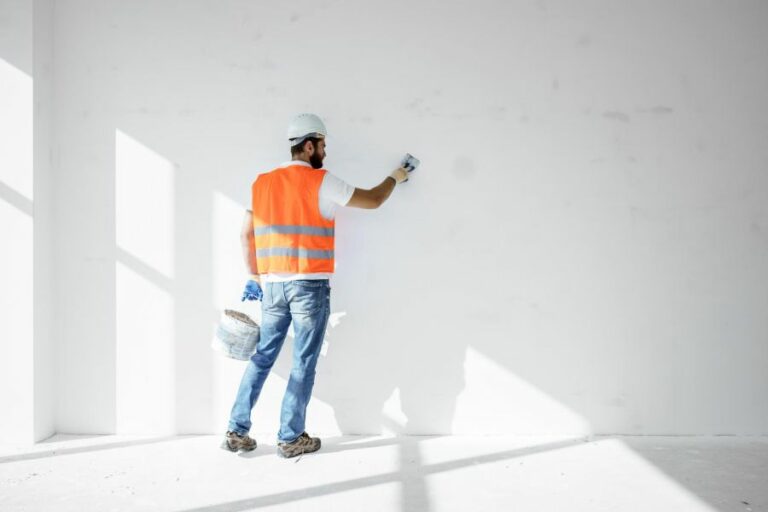The Role Of Surface Profiling In Successful Paint Adhesion
Have you ever wondered why a well-painted surface appears flawless while another might show signs of cracking, peeling, or poor adhesion? As it turns out, the preparation process significantly impacts the final result, ensuring that the paint adheres effectively and evenly to the surface. One crucial aspect of this preparation is surface profiling, which greatly contributes to successful paint adhesion.
The role of surface profiling in successful paint adhesion:
Surface profiling is essential for successful paint adhesion, as it involves removing contaminants and modifying a material’s surface for improved coating application. It ensures a clean, paint-ready surface with increased contact area and promotes chemical bonding for strong, durable adhesion. Surface profiling techniques include abrasive blasting, grinding, water jetting, chemical etching, and conversion coatings.

Intrigued by the connection between surface profiling and paint adhesion? Continue reading to discover how subtle changes in a surface’s properties can significantly impact paint bonding.
Gain insights into surface treatments and techniques that can greatly improve lasting adhesion. Read on and unlock the secret to successful paint adhesion!
Contents
- 1 The Importance of Surface Profiling for Paint Adhesion Success
- 2 Understanding Surface Profile in the Painting Process
- 3 The Impact of Surface Roughness on Paint Adhesion
- 4 Enhancing Paint Adhesion: Techniques and Tips
- 5 The Crucial Role of Surface Preparation in the Painting Process
The Importance of Surface Profiling for Paint Adhesion Success
• Introduction to Surface Profiling
Surface profiling, or surface preparation, is an essential step in ensuring successful paint adhesion. It is a process that involves mechanically or chemically modifying or removing contaminants and imperfections from a material’s surface to improve its readiness for coating applications.
Surface profiling is crucial in many industries, such as automotive, aerospace, marine, and construction.
• Impact of Surface Profiling on Paint Adhesion
Failure to adequately prepare a surface for painting can result in numerous problems, including poor adhesion, blistering, flaking, and eventual paint failure. Surface profiling plays a critical role in successful paint adhesion by:
– Removing Contaminants
Surfaces often have contaminants such as grease, oil, dirt, or rust that can impede paint adhesion. Surface profiling effectively removes these contaminants, ensuring a clean and suitable surface for painting.
– Improving Surface Texture
Roughening the surface increases the area of contact between the surface and the paint, providing better adhesion. Surface profiling techniques, such as abrasive blasting and chemical etching, create a uniform level of roughness, which significantly improves paint adhesion and durability.
– Promoting Chemical Bonding
Certain surface profiling methods, like chemical etching or conversion coatings, promote chemical bonding between the paint and the substrate. This bonding is critical for creating a strong and durable paint adhesion.
• Traditional and Modern Surface Profiling Techniques
There are several surface profiling techniques, ranging from traditional methods to more advanced approaches. Here, we classify them into two broad categories: manual/mechanical methods and chemical methods.
– Manual/Mechanical Surface Profiling Methods
- Abrasive Blasting: This technique involves propelling abrasive material at high pressure against the surface to remove contaminants, create roughness, and improve paint adhesion. Examples include sandblasting, grit blasting, and bead blasting.
- Grinding: Hand or power tools with abrasive attachments are used to remove surface contaminants and roughen the surface. Commonly used tools include angle grinders, sanders, or wire brushes.
- Water Jetting: High-pressure water is used to remove contaminants and contaminants from the surface, providing a clean, paint-ready surface.
– Chemical Surface Profiling Methods
- Chemical Etching: This method involves applying an acid or other chemical solution to the surface to remove contaminants, create roughness, and promote chemical bonding with the paint coating.
- Conversion Coatings: Commonly used for metal surfaces, conversion coatings chemically modify the metal surface to create a more stable, adherent, and corrosion-resistant surface for paint application.
• Factors to Consider in Surface Profiling
Choosing the appropriate surface profiling method for your project depends on several factors, including the following:
- The material’s composition and properties (e.g., metal, plastic, or composite)
- The type and severity of surface contaminants
- The paint or coating system’s specifications and requirements
- Environmental and safety considerations
- Cost and time constraints
When selecting a surface profiling method, consult the paint manufacturer’s recommendations and industry standards to ensure compatibility and adequate surface preparation.
• Expert Recommendations for Successful Paint Adhesion
Based on personal experience and industry best practices, here are some recommendations to ensure successful paint adhesion through surface profiling:
- Thoroughly assess the surface to identify any contaminants and imperfections that require removal or modification.
- Select a suitable surface profiling method based on the factors discussed above, ensuring it meets the paint manufacturer’s recommendations and industry standards.
- Properly execute the chosen surface profiling method, strictly adhering to the prescribed procedures and safety measures.
- Always inspect the surface after profiling to ensure the desired level of cleanliness and roughness has been achieved.
- Prioritize environmental and worker safety throughout the surface profiling process by using appropriate protective equipment and environmentally friendly techniques.
By following these recommendations and carefully considering the role of surface profiling in paint adhesion, you can significantly improve the longevity and appearance of your finished paint job. Proper surface profiling is crucial to achieving a professional, durable, and long-lasting paint application.
Understanding Surface Profile in the Painting Process
Surface profile refers to the texture, roughness, and topography of a surface that is being prepared for painting. It is an essential aspect of surface preparation, as it directly impacts the adhesion, performance, and longevity of the applied coating system.
• Importance of Surface Profile
– Enhances Coating Adhesion
One of the primary reasons for considering surface profile in painting is its potential to improve the adhesion of coatings.
A rough, textured surface profile increases the surface area available for the coating to bond with, ultimately promoting better mechanical adhesion and reducing the risk of coating failure.
– Increases Coating Performance
A suitable surface profile is crucial for ensuring the long-term performance of the applied coating. It helps in maintaining the integrity of the protective barrier created by the paint, which can safeguard the underlying substrate from corrosion, weathering, and other external factors.
Furthermore, it contributes to improved aesthetics, as it can influence the appearance and finish of the final paint job.
– Enhances Surface Preparation
Surface preparation is a vital step in painting projects, and achieving an appropriate surface profile plays a significant role in this process.
Preparing the surface involves cleaning and profiling the surface, which aids in removing contaminants, such as dirt, oil, and previous coatings, and creating a surface profile that promotes optimum adhesion.
• Measuring Surface Profile
– Testex Press-O-Film Replica Tape
The testex press-o-film replica tape is a popular and simple method for measuring surface profile. The tape consists of a compressible foam layer with a plastic film on top.
When pressed against the surface using a burnishing tool, the foam fills the surface irregularities. By measuring the thickness of the compressed tape using a micrometer, the surface profile can be determined.
– Surface Profile Gauge
A surface profile gauge, such as a stylus roughness tester, is another widely used method for measuring surface profile. The device consists of a stylus that is dragged across the surface. As the stylus moves, it records the peaks and valleys of the surface, providing a digital reading of the average surface profile.
This method can offer accurate and repeatable measurements, making it ideal for quality assurance purposes.
– Comparators and Surface Comparisons
Surface comparators are handheld devices with a range of engraved surface profiles. By comparing the surface with the comparator, the user can visually and tactually assess the surface profile. Although it is a qualitative and subjective method, it is a useful tool for quick, on-site evaluations.
• Factors to Consider when Achieving an Optimal Surface Profile
– Coating Specification
Different coatings have diverse requirements regarding surface profile, which may depend on their thickness, chemical composition, and intended use. It is essential to consult the coating manufacturer’s guidelines to understand the optimal surface profile range for the specific product being used.
– Substrate Material
The substrate material and its condition can significantly influence the choice of surface preparation techniques and the achievable surface profile. For instance, metals like steel may require abrasive blasting or grinding to achieve the desired surface profile.
In contrast, concrete surfaces may need acid etching or mechanically profiling, such as shot blasting.
– Environmental Conditions
The environmental conditions at the project site, including temperature, humidity, and the presence of airborne contaminants, can impact the surface preparation process and the development of the desired surface profile.
It is crucial to take these factors into account and follow the relevant guidelines to ensure consistency and success in achieving the optimal surface profile.
• Recommendations
Based on personal experience, the following recommendations can help achieve the appropriate surface profile for painting projects:
- Always follow the coating manufacturer’s guidelines for surface profile requirements.
- Select the appropriate surface preparation technique based on the project’s unique characteristics.
- Measure the surface profile using reliable techniques, such as testex press-o-film replica tape or surface profile gauges, to confirm compliance with the specified requirements.
- Monitor environmental conditions during surface preparation and make adjustments as needed.
- Ensure ongoing quality assurance through regular inspections and documentation of surface profile measurements.
In conclusion, understanding and executing the optimal surface profile in painting projects is a critical aspect of ensuring the long-term success and performance of the applied coating system.
By following the guidelines and recommendations provided in this article, you can achieve a successful painting project that offers protection, durability, and aesthetics.
The Impact of Surface Roughness on Paint Adhesion
Surface roughness is a critical factor that greatly influences adhesion between two materials. Understanding the relationship between surface roughness and adhesion is essential in various industries such as manufacturing, aviation, and even biological systems.
• The Importance of Surface Roughness
Surface roughness, also referred to as surface texture, is the measure of the deviations of a surface from an ideal flat plane. It consists of different parameters including height, shape, and orientation of the surface irregularities.
A surface with low roughness appears smooth and even, whereas one with high roughness will be more jagged or rough to the touch.
Surface roughness can have significant effects on the functioning and performance of materials and products. In particular, surface roughness greatly influences adhesion in processes such as bonding, coating, and sealing.
In fact, a surface’s adhesion properties can be significantly improved by simply altering its roughness.
Research has shown that surface roughness, to a substantial extent, determines the bonding strength and effectiveness of adhesion between two interfaces.
It plays a crucial role in various applications, ranging from simple adhesive bonding in household products to the complex attachment mechanism in biological systems like gecko feet.
• Factors Influencing Surface Roughness and Adhesion
There are several factors that contribute to surface roughness and hence, affect adhesion between two materials. These factors can be broadly categorized into four groups: mechanical, chemical, thermal, and topographical.
- Mechanical factors primarily include the surface preparation method, such as grinding, polishing, or etching. The choice of abrasive material and the applied pressure also impact surface roughness.
- Chemical factors involve surface treatments using chemicals like solvents or acids that alter the surface chemistry and consequently affect adhesion. Some chemical treatments, such as plasma treatment, can significantly improve adhesion by increasing surface roughness.
- Thermal factors encompass the effects of heating, cooling, or temperature cycles on the material’s surface. Thermal stresses can cause uneven expansion or contraction, leading to cracks and changes in surface roughness.
- Topographical factors refer to the geometric patterns on a surface that affect adhesion by influencing the contact area between two materials. For instance, surfaces with higher roughness have a larger contact area that can potentially enhance adhesion.
• Theories Explaining the Relationship between Surface Roughness and Adhesion
There are two main theories that explain how surface roughness affects adhesion: the mechanical interlocking theory and the wetting theory.
– Mechanical Interlocking Theory
The mechanical interlocking theory suggests that increased surface roughness enhances adhesion by providing more opportunities for mechanical interlock between the two surfaces.
The irregularities on a rough surface create an increased contact area, allowing more points where the adhesive can secure itself. This results in a stronger bond and higher adhesive strength.
– Wetting Theory
The wetting theory, on the other hand, explains that adhesion is directly influenced by the ability of an adhesive to spread over and fill in the surface irregularities of a material.
Good wetting of the surface ensures intimate contact between the adhesive and the adherend, increasing the potential for stronger bonding. In essence, a rough surface with good wetting properties favors effective adhesion.
• Recommendations for Optimizing Adhesion Based on Surface Roughness
In order to achieve optimal adhesion between two materials, the surface roughness must be carefully controlled. The following recommendations can serve as guidelines for improving adhesion based on surface roughness:
- Tailor surface roughness to the specific adhesive material and application. Consider the desired adhesive properties and determine the appropriate surface roughness to match those requirements.
- Employ suitable surface preparation methods, such as mechanical treatments, chemical etching, or plasma treatments, to modify surface roughness as needed.
- Evaluate the surface wetting properties of the adhesive. Utilize adhesives with good wetting capabilities to ensure effective bonding on rough surfaces.
- Analyze the topographical factors that impact surface roughness and ensure that the surface geometry supports the desired adhesive performance.
In conclusion, surface roughness is a critical parameter that significantly affects adhesion, and a comprehensive understanding of the relationship between surface roughness and adhesion is crucial for various industries and applications.
By considering the factors that contribute to surface roughness, the underlying theories, and the recommendations provided, it is possible to optimize adhesion between materials based on surface roughness.
Enhancing Paint Adhesion: Techniques and Tips
Paint adhesion is a crucial aspect when it comes to achieving a professional and durable finish on any surface. With improper adhesion, you risk experiencing problems like peeling, chipping, or blistering, ultimately compromising the appearance and longevity of the painted surface.
• Surface Preparation: The Key to Better Adhesion
Proper surface preparation is the most critical factor in ensuring successful paint adhesion. The surface must be clean, free of contaminants, and appropriately textured for the paint to bond appropriately. Follow these steps to prepare your surface effectively:
– Cleaning the Surface
Remove any dirt, dust, grease, or other contaminants from the surface to provide a clean and uniform base for the paint to bond.
- Washing: Use water, mild detergent, and a soft cloth or sponge to clean the surface thoroughly. For exterior surfaces or areas with stubborn grease, a power washer can be beneficial. Always rinse the surface with clean water afterward to remove any detergent residue.
- Degreasing: If the surface is still greasy or oily after washing, a specialized degreaser may be needed. Apply the degreaser according to the manufacturer’s instructions, then rinse and let the surface dry thoroughly before proceeding.
- Mold and Mildew: If mold or mildew is present, treat the affected areas with a suitable cleaner specifically designed for mold or mildew removal. Follow the manufacturer’s instructions and take necessary precautions for your safety.
– Removing Loose or Peeling Paint
Chipping and peeling paint must be removed to ensure proper adhesion of the new coat of paint. Numerous methods can be employed based on the surface type, paint condition, and the user’s preference:
- Scraping: Use a paint scraper or a putty knife to gently remove loose paint without damaging the underlying surface.
- Sanding: Employ different grit sandpapers to smooth out the surface and remove any remaining flaking paint. Start with coarse-grit sandpaper (approximately 80-grit) and work your way to finer grits (150 or 220-grit) to achieve a smooth finish.
- Chemical Removers: Some paint removers contain chemicals that dissolve the paint, allowing for easy removal. Always follow the manufacturer’s instructions and exercise caution when handling chemicals.
- Heat Methods: Use a heat gun or a specialized infrared paint remover to soften the paint, then scrape it off. Take care not to overheat the surface to avoid damage or combustion hazards.
– Surface Repair and Priming
Once the surface is clean, repair any imperfections and scuffs before applying paint. Use appropriate fillers, caulking, or putty to fill cracks, holes, or dents, and then sand the area smooth.
After the repairs, apply a suitable primer to ensure improved adhesion and coverage from your paint. Primers can also help seal porous surfaces, mask stains, and provide a consistent base color.
• Choosing the Right Paint
Selecting the appropriate paint is essential to achieving proper adhesion. Factors to consider include:
- Compatibility: Ensure the topcoat is compatible with the surface material and the primer. Seek advice from a professional or read the manufacturer’s guidelines if you are unsure.
- Quality: High-quality paints offer improved adhesion in comparison to cheaper, low-quality alternatives.
- All-In-One Paints: Some products combine primer and paint, enabling better adhesion, especially on surfaces that have been prepared as recommended above.
• Application Techniques for Improved Adhesion
The manner in which paint is applied can significantly impact its bonding with the surface. Keep these factors in mind when applying paint:
- Tool Selection: Select the appropriate brush, roller, or sprayer per your paint and surface type. A high-quality applicator will contribute to better adhesion.
- Applying Primer: When using a primer, allow adequate drying time as mentioned in the manufacturers instructions before applying the topcoat.
- Thin Layers: Apply thin layers of paint rather than a single, thick layer, as this will allow for proper curing and improved bonding between coats.
- Drying Time: Be patient and allow the paint to dry fully between coats. This step is essential for proper adhesion and robustness in the long run.
- Weather Conditions: Extreme temperatures and humidity can negatively impact paint adhesion. It’s best to follow the manufacturer’s recommendations for application conditions to avoid issues.
By keeping these steps and recommendations in mind, you will equip yourself with the necessary knowledge to achieve improved paint adhesion, ensuring a professional, durable, and aesthetically pleasing finish.
Steps | Description |
|---|---|
1. Surface Preparation | Clean the surface thoroughly to remove dirt, dust, grease, or any contaminants that could affect paint adhesion. |
2. Sanding | Lightly sand the surface with fine-grit sandpaper to create a slightly rough texture, which improves adhesion. |
3. Priming | Apply a primer to the surface to create a uniform and smooth base that enhances paint adhesion. |
4. Quality Paint | Use high-quality paint with good adhesion properties for better and long-lasting results. |
5. Proper Application | Apply paint in thin, even layers, ensuring each coat dries properly before applying the next one. |
6. Curing | Allow the paint to fully cure as per the manufacturer’s instructions for maximum adhesion and durability. |
The Crucial Role of Surface Preparation in the Painting Process
• Why Surface Preparation Matters
Surface preparation is a crucial step in the painting process because it directly impacts the final outcome and longevity of the paint job. Properly preparing the surface ensures optimum adhesion and durability of the paint, resulting in a smooth, high-quality finish that lasts.
– Affects Appearance and Performance
A poorly-prepared surface is more prone to paint failures, such as peeling, blistering, and cracking. These problems can often be traced back to inadequate surface preparation.
In addition, a well-prepared surface showcases a smoother, cleaner, and consistent appearance of the paint. Thus, investing time and effort in surface preparation ensures the paint’s superior performance and prolongs its lifespan.
– Enhances Paint Adhesion
One of the primary goals of surface preparation is to create an ideal surface for the paint to adhere. A clean and properly-prepared surface allows the paint to bond more effectively, providing a strong and durable finish.
– Promotes Even Absorption
Poor surface preparation can lead to uneven absorption of the paint. This can result in uneven drying, visible dry areas, and inconsistencies in the finish. Properly preparing the surface ensures that the paint is absorbed evenly, resulting in a uniform appearance.
– Reduces the Need for Repainting
Skipping or skimping on surface preparation may save time initially, but it will likely necessitate frequent touch-ups and repainting in the long run. A well-prepared surface increases the longevity of the paint job and reduces the need for frequent repainting, saving both time and money.
• Key Steps in Surface Preparation
To achieve the best results, meticulous attention should be given to the following aspects of surface preparation:
– Cleaning the Surface
Cleaning is an essential step in surface preparation. Dirt, dust, and other contaminants can compromise the paint’s adhesion, leading to poor performance and premature paint failure.
It is imperative to thoroughly clean the surface using appropriate cleaning agents or pressure washing, ensuring that it is free from dirt and debris.
Moreover, mold, mildew, and other biological growth must be eliminated before painting, as these can significantly impact the paint’s durability.
– Removing Old Paint and Loose Material
Peeling, chipping, or cracking paint should be removed before applying a new coat. Sanding or scraping is often necessary to remove loose paint and create a smooth surface. Proper disposal of the removed old paint is also essential, as it may contain hazardous materials.
– Repairing Surface Imperfections
Surface imperfections, such as holes, cracks, and dents, can impact the appearance and performance of the paint job. Repairing these imperfections with appropriate fillers and sealants ensures a smooth and even finish. These repaired areas should be sanded and primed before painting.
– Sanding and Roughening the Surface
Sanding not only removes old paint and smoothens the surface but also helps create a suitable profile for the new paint to adhere.
Power sanders or sanding blocks can be used, depending on the size of the area and the type of surface material. It is essential to follow the correct grit size sequence and techniques to achieve a consistent surface profile.
– Selecting and Applying Primer
After the surface is cleaned and repaired, applying a suitable primer is crucial to improve paint adhesion and seal the surface. Primers also help in smoothening the surface, ensuring an even finish. Selecting the right primer depends on the type of surface material and the paint being used.
Thoroughly reading the product guidelines and recommendations and adhering to them can yield the best results.
• Final Thoughts and Recommendations
Surface preparation is an indispensable component of a successful painting project. It directly affects the appearance, performance, and durability of the paint job. Investing time and effort in proper surface preparation can save money and resources in the long run by reducing the need for frequent repainting.
As an experienced painter, I recommend following these guidelines:
- Do not rush the preparation process.
- Use appropriate materials and tools designed for the specific surface material.
- Follow the product guidelines and manufacturer recommendations to ensure optimal surface preparation and painting results.
- Seek professional advice or services if unsure about surface preparation requirements or techniques.

